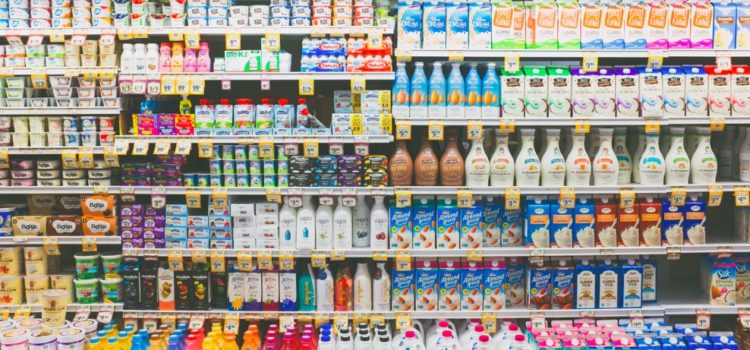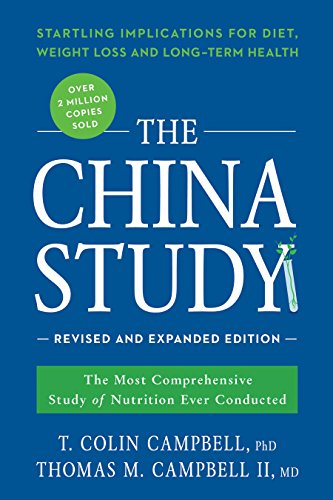

This article is an excerpt from the Shortform summary of "The China Study" by Colin Campbell. Shortform has the world's best summaries of books you should be reading.
Like this article? Sign up for a free trial here .
You love milk, yogurt, and cheese, and you know they’re generally healthy for you. But how do you know that? Did you learn it at school? From your parents? From Got Milk? ads? The dairy industry has influenced your nutrition knowledge whether you know it or not.
Part of the problem with the dairy industry, and many other food industries, is that they’re far more involved in our lives and our decisions than we’re aware. We’ll cover why this a problem for the consumer and how the dairy industry particularly has promoted health messages that are inaccurate.
Problems With the Food Industry
Before we get to the dairy industry particularly, let’s talk about the food industry generally. Food costs consume a huge percentage of our budget. Because we’re dependent on food, we’re also fairly dependent on those who market and sell it. “Health” industries take advantage of this. By making claims about the proven nutritional value of their products, food and drug companies and advocacy groups blur the line between science and marketing.
Organizations like the National Dairy Council, the American Meat Institute, and Florida Citrus Processors Association each have annual budgets in the hundreds of millions of dollars. With this money comes power over research, medical education, and government decisions.
Problems for the Consumer
Let’s look at some of the problems of a system in which industries Big Dairy and science merge.
Problem #1: The consumer can’t always tell which claims are based on rigorous research and which are marketing ploys.
It’s the job of industries to sell a product. But when they clothe their marketing in scientific language, they make it hard for the consumer to understand the truth of a product’s health claims.
Problem #2: Consumers are particularly vulnerable to food and drug industries.
Our lives literally depend on the foods we eat and the drugs we take. We might be able to resist the newest Apple offering or Lululemon pants because we know, on a rational level, that we don’t really need them. But we can’t say that about food.
When industries tell us that we need their products in order to be healthy, they’re hard to resist. They use scientific language or cite scientific studies to make it sound like it’s science that says we need these products. And whereas the layman might be skeptical of an advertiser’s health claim, he often doesn’t have the background knowledge to argue with “science.”
Problem #3: Marketers take advantage of scientific reductionism.
Researchers often study nutrients out of context. This can result in conflicting findings and confusion. It also makes it easy for industries like the milk industry to find a favorable study result and exploit it, taking the finding out of context. (This is what the supplement industry did with lycopene.)
Problem #4: Industries like the big dairy industry use shady tactics to prioritize profits over public health.
T. Colin Campbell, author of The China Study, says that while he was preparing to publish the results of the China Study, the National Dairy Council and the American Meat Institute employed a committee of researchers to infiltrate scientific councils and boards across the nation and keep tabs on his and others’ work.
The big dairy and meat industries wanted to stay ahead of the “competition” (the researchers). They wanted to know what scientists were discovering that might hurt their profits so they could market their own versions of the research.
This might be a smart (if unethical) business move, but it increases the confusion around nutrition research and hurts consumers looking for the truth.
How the Dairy Industry Influenced Your Childhood
Big Dairy was a huge part of your childhood, whether you know it or not. Do you remember the catchphrase encouraging you to drink more milk? Can you picture one of the dozens of celebrities featured in Got Milk? ads? Did you learn at school that you needed to drink milk to grow strong bones?
The dairy industry is a major industry, one of the most powerful in the country. In 2003, the National Dairy Council’s budget for marketing alone was $165 million. (In contrast, the budget of the National Watermelon Promotion Board was $1.6 million.)
The Dairy Council’s stated goal, unsurprisingly, is to increase demand for dairy products, and they’re open about their strategy of targeting children and their mothers through schools.
The Dairy Industry’s Relationship with Schools
The milk industry uses schools as a platform in various ways.
For example, the industry publishes highly successful educational programs on nutrition, one of which was used in 76% of the nation’s preschools and kindergartens in 1999. Programs aimed at 2nd- through 4th-graders reach 12 million students every year and high schools receive videos, posters, and nutrition teaching guides. These nutritional programs highlight the importance of milk and dairy products in a healthy diet. Some of these nutrition guides even reassure kids that ice cream is healthy. In addition to promoting the health of all dairy products, even desserts and junk foods, some “nutrition” lesson plans include making cow puppets and “Moo Masks.” Curricula provided by the dairy industry is the only nutrition education that most kids get.
Representatives of the milk industry also go to schools to teach cafeteria managers how to keep milk cold, the way kids like it, and run promotions in over 20,000 schools to increase milk consumption.
Marketing to Adults with “Science”
The dairy industry also markets to adults, appealing to their desire to keep their families healthy by sharing research that proves milk’s benefits. They even spend $4 to $5 million a year on conducting their own research.
The industry was excited when a study on conjugated linoleic acid (CLA), produced in the cow’s rumen (one of its four stomachs) and present in milk products, showed that CLA might prevent stomach tumors and slow the growth of existing tumors.
Soon, journalists were reporting that milk fought cancer. But this wasn’t a logical conclusion. First, CLA was tested in isolation. There was no proof that milk, even milk with CLA, prevented cancer, only that CLA on its own seemed to prevent stomach tumors from forming.
Second, the CLA studies were done on mice. The results weren’t confirmed in humans.
Third, some of the experimenters used the tricky method of administering the CLA before, not after, the carcinogen. This was a problem because CLA activates the enzyme system. The tumor could be prevented from forming simply because the enzyme system is highly activated, not because CLA is an anticarcinogen. It’s like eating a handful of pesticide, then eating a handful of peanuts drenched in the carcinogen aflatoxin. By eating the pesticide first, you revved up the enzyme system that gets rid of the body’s toxins. Now, your system is better prepared to fight the aflatoxin. But this doesn’t make pesticides anticarcinogens, just like CLA’s ability to activate your enzyme system doesn’t make it an anticarcinogen.
One scientist researching CLA privately acknowledged the limits of CLA research, but continues to work for the dairy industry and won’t share his opinion publicly.
Summary of Recommendations
Understand that information on food labels and in advertisements, no matter how scientific it appears, is almost always placed there in the hopes that it will convince you to buy the product. Milk and dairy products are no different. As dairy is tied to more and more diseases, it’s important to be a smart consumer and skeptical of nutritional claims.
———End of Preview———

Like what you just read? Read the rest of the world's best summary of "The China Study" at Shortform . Learn the book's critical concepts in 20 minutes or less .
Here's what you'll find in our full The China Study summary :
- Why animal proteins (meat, milk) might cause cancer, diabetes, and other diseases
- Why the medical institution is structured to hide the truth about disease and food
- The precise diet you'll need to eat to live longer and feel happier






